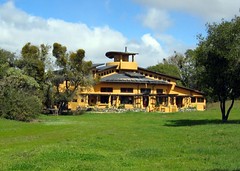 Is your icebox one of the most often visited places in your home during the summer time? Is your house so unpleasantly hot that you dream you lived in Iceland? Millions of homeowners in Toronto and elsewhere are impacted by this problem every summer. We are bringing you some advice on how to get ready for the next hot summer.
Is your icebox one of the most often visited places in your home during the summer time? Is your house so unpleasantly hot that you dream you lived in Iceland? Millions of homeowners in Toronto and elsewhere are impacted by this problem every summer. We are bringing you some advice on how to get ready for the next hot summer.The easiest option: Air-conditioners
The internal temperature of our houses can be decreased by more ways, let's take a short look at them. The most effective, but most expensive, is the well-known air-conditioner. If you want to get the best value possible from your AC unit, there are several tips to follow - of course if you decide to go this way. First, pick a machine of the correct size according to the size of your house or condo. If you have a common family home with two bedrooms, look for units with around 5,000 btu - that should be enough. Ideally, the unit should be placed in a window on the wall that faces north, if that is possible. This will ensure optimum conditions for the unit which will allow it to operate more efficiently. Clean the internal filters at least once a month to prevent house dust from building up and having a negative effect on its operation. If you know you won't be home for more than an hour, just turn the AC off and then after your return re-cool the rooms, this way it is more economical.
Solutions for green-thinking customers
But what to do if you think more eco-friendly and don't want to use precious energy for these power-hungry machines? Well, there are more ways to decrease the internal temperature without adding to global warming by excessive and unnecessary use of CO2 producing fossil fuels. We will begin with the top of your house and go downwards step by step.
Roof
As you might already know, the amount of heat transferred depends on the sort of material it goes through. Tiles, shingles or other sorts of roofing materials are a perfect example of this. If you wish to save on air-conditioning, think about applying a good-quality insulation to your attic space. A 12-inch layer instead of a 3-inch might reduce the cooling costs by as much as 10 percent.
To read the rest of the story, please follow the Keeping your Toronto home cool article.
Photo by jon starbuck








